Masonry means construction of buildings utilizing building blocks such as stone, bricks, and concrete blocks, etc.. Masonry is used for the construction of foundation, plinth, walls, and columns.
Mortar is the binding material for the building blocks. In this article, different kinds of stone masonry used are explained, and points to be observed while supervising stone masonry works are listed.
What Is Stone Masonry?
Important Point
The construction of stones bonded together with mortar is termed as stone masonry. This method involves various stone masonry types depending on the kind of stones and the method of construction.
Where the stones can be found in abundance in nature, on cutting and dressing to the proper shape, they provide an economical material for the construction of various building components such as walls, columns, tootings, arches, beams, etc..
Being stronger, durable, and weather-resistant, stone masonry when compared with brick stone masonry, is used in the construction of piers, docks, dams, lighthouses, and other marine structures.
Types of Stone Masonry
Mainly, when we define stone masonry, there are three primary types of stone walls or Stone Work Types:
- Rubble Masonry.
- Ashlar Masonry.
- Squared Stone Masonry.
Also, read: What Is Standard Proctor Test & his Detail | Procedure Standard Proctor Test
Useful Article for You
- What Is a Contour Interval
- What Is Tile
- What Is the Difference Between a Shower Pan and a Shower Base?
- What Is a Window Panel
- Type of Arch
- What Is a Frame Structure
- What Is the Measurement for a Queen Size Bed
- What Is Considered Livable Space
- What Is One Way You Can Save Electricity?
- What Is Mdf Mean
- What Is a Bundle of Shingles
- What Is a Gallon of Water Weigh
- What Is SuperelevationWhat Is Overhang
- What Is Sand Blasting
- What Is a Span Bridge
- What Is the Little Black Diamond on a Tape Measure
- What Is a Louvered Door
- What Is a Spread Footing
- What Is Leveling
- Different Types of Beam
- What Is Pedestal
- What Is Plumbing Fixtures
- What Is Slab Construction
- What Is Calacatta Quartz
- What Is Auxiliary View
- Sheepsfoot Roller
- Live Load Vs Dead Load
- What Is 1 Flight of Stairs
- What Is Refractory Cement
- Dry Pack Concrete
- What Is Luminous Flux Vs Lumens
- What Is a Frost Wall
- What Is an Undercoat
- What Is Road Pavement
- Arch Foundation
- What Is a Stair Landing
- What Is Stone Masonry
- What Is a Spandrel Beam
- What Is Pier and Beam Foundation
- What Is Levelling
- What Is a Pile Cap
- What Is a Mat Foundation
- What Is a Floating Slab
- What Is the Purpose of Foundation
- What Is Modulus of Rupture
- What Is a Flush Door
- What Is Residential Construction
- What Is the Best Foundation for a House
- What Is a Benchmark in Surveying
- What Is a Engineering Drawing
- What Is an Admixture
- What Is a Monolithic Slab Foundation
- What Is the Standard Size Water Supply Line
- What Is the Difference Between Tension and Compression?
- What Is a Tremie
- What Is Tributary Area
- What Is Shoring Construction
- What Is a Cason
- What Is Wall Putty
- What Is the Difference Between Mortar and Concrete
- What Is Bhk
- What Is Sbc of Soil
- What Is Plinth Level
- What Is Water Proofing
- What Is Mix Design of Concrete
- What Is Fine Aggregate
- What Is Retention Money
- What Is Design Mix
- What Is Isometric Scale
- What Is Development Length
- What Is Superelevation
- What Is Wall Made Of
- What Is Micro Piling
- What Is Soil Stack
- What Is a Half Wall Called
- What Is Flagstone
- What Is a Cinder Block
- What Is Floors
- What Is a Parapet in Construction
- What Is Concept Drawing
- What Is a 30 Degree Angle
- What Is a Mezzanine Level
- What Is Plinth Area
1. Rubble Masonry.
Rubble, composed of natural stone, or stone so dressed as not to permit laying with uniformly thick joints or horizontal joints.
The rubble stone masonry may be laid coursed or uncoursed, and there are different types of stone masonry within this category. When coursed, the stones are leveled off at specified heights to an approximately horizontal surface.
These courses are not necessarily of the same height but may rise by steps. This work is said to be random coursed.
In uncoursed rubble, the stones are fitted together without regard for courses. Dry rubble is laid without mortar, in low retaining walls and slope walls.
Most of the stone masonry wall structures, including low retaining walls and slope walls in part projects, are laid up in rubble stone masonry.
It fits into the surroundings better than more formal kinds of masonry and is usually built of stones found nearby.
For these projects, it is the most attractive masonry when well built, and satisfies all of the requirements of such field structures.
More than that, rubble masonry is a thing of beauty’ when well done, and its composition and. Pattern call for good Judgment and imagination.
One factor in doing a pleasing job Is the choice of stones for size. By observing the rule that headers must be used frequently to tie the wall together, considerable variation in size will be realized.
Smaller stones, chinking irregular spaces between larger stones, also add to the pattern.
The choice of stones for shape is another factor deserving many studies. Since it is unnecessary to hold to courses of uniform height, odd shapes can be used with fine effect.
Occasionally a stone of striking shape and considerable size can be placed to break up too much regularity in the pattern. Long, thin planes give a horizontal effect, which is most pleasing in low structures.
The mortar joints must be kept as uniform in thickness as possible. Many variations in the thickness of the joints will destroy whatever beauty the pattern may have in other respect.
Remember that the wall must be strong, as well as pleasing. So there is more than the pattern on the face to consider.
The pattern need not be sacrificed for strength if stones are chosen for their width extending through the wall, as well as for shape and size, and if care is taken to use a header at every opportunity.
Among the types of rubble masonry, rubble masonry stands out as one of the best things that an enrollee can learn to handle, for experts in this trade are in demand, and architects and landscape architects always have the need of men who can lay up this type of masonry in an artistic manner.
The thing we find most beautiful is that which satisfies our sense of proportion and of the suitability of materials, and our feeling for good taste in design.
It will be simple and appropriate, in a pattern pleasing in its variety and balance, end having unity, with its surroundings.
Also, read: What Is Concrete | 31 Different Types of Concrete
2. Ashlar Masonry.
Ashlar, a form of dressed stone masonry, is stone dressed to permit laying with uniformly thick horizontal joints l/2 inch thick or less. It is divided into two classes:
First, ranged or regular coursed ashlar, also called cut-stone work or dimensioned stone work. This is made of rectangular blocks cut and dressed to prescribed dimensions, and laid in courses of uniform height.
Second, broken ashlar, which is made of rectangular stones cut to dimensions, but not of equal thickness, and laid in the wall in courses which are not continuous throughout. The courses are not always of the same height.
Ashlar is the finest class of masonry. Extreme care is used in setting the stones. The bed for the stone must be thoroughly clean and wetted down.
A thin layer of mortar is then spread evenly. The bed surface of the stone is wetted down. Then the stone is lowered into place on two strips of wood laid in the mortar.
Heart, with a pinch bar, the stone is moved into its exact position and plumbed. The strips of wood are then removed, and the stone settled into place, being leveled by striking with a wooden mallet. The mortar joint should not be over l/2 inch thick.
Each of these three classes of stone masonry is divided into several others. These other classes and combinations of types of arc often used with distinctive names.
Also, read: What Is Shoring In Construction | Type of Shoring
Useful Article for You
- Zero Force Members
- How Much Does a Yard of Concrete Weigh
- Cmu Wall Meaning
- Gradient Road
- Budget Sunroom Ideas
- What Is Gypsum Board
- Types of Vaulted Ceilings
- Well Points
- How Does Baking Soda Remove Blood from Carpet
- What Are Forms in Construction
- How Heavy Is Dirt
- Tender Meaning in Architecture
- Dark Olive Green House
- Cast in Place Concrete
- Lean to Roof
- How Tall Is an Average Door
- Grade Beam Foundation
- Window Sill Height
- Concrete Cold Joint
- Types of Traps
- Types of Pipe
- Wood Supporting Beams
- Finishing Plaster
- Home Depot Scrap Wood
- Lvl Beam Size Calculator
- Structural Shell
- Curb Types
- Msand
- Optimum Dry Meaning
- Disadvantages of Low-E Glass
- Bridge Abutment Definition
- Build Materials List
- Composite Masonry Wall
- Is Cedar a Hardwood or Softwood
- Modified Proctor Test
- Physical Properties of Sand
- Sugar in Concrete
- Crane Machine Construction
- Types of Gable Roofs
- Door Frame Types
- How Much Does 55 Gallons of Oil Weigh
- Dog Leg Stairs
- Concrete Salt Finish
- Westpoint Bridge Builders
- Types of Porches
- Hempcrete Disadvantages
- Roof Pitch Types
- Types of Weirs
- Asphalt Floor
- Dutch Roof
- #6 Rebar Weight Per Foot
- Prizmatic Compass
- Bond Break Concrete
- Poured Concrete Wall Cost Calculator
- How Many 60 Lb Bags of Concrete in a Yard
- Wood Fence Post Spacing Chart
- Falsework
- Design of Building Structures
- Topping Slab
- Types of Cinder Blocks
- Fresh Concrete
- Door Colors for Red Brick House
- Clear Cover Concrete
- Tiles Brand
- Cement Consumption in Plaster
- Aggregate Density Kg M3
- Weight of Concrete Slab Calculator
- Is Clay Smaller Than Silt
- How to Calculate Dead Load
- Bad Concrete Work
- Stepped Foundations
- Residential Construction Cost Estimator Excel
- Different Construction Trucks
- Septic Pump Replacement Cost
- Dead Load Calculator
- Beam Vs Column
3. Square Stone Masonry.
Square Stone Masonry, a type of stone masonary (note: there’s a typo in the keyword), is laid up with a stone that has been roughly dressed to permit its laying with horizontal joints l/2 inch thick or thicker and is adapted to the same bonds as ashlar.
It is not dressed to as fine a finish as ashlar and therefore, may require joints thicker than 1/2 inch to take up the inequalities of the stones.
It is divided into three classes:
- Range masonry, in which all stones are of the same height, and their lengths are fairly uniform.
- Broken range, in which the courses are not all of the same height, and two stones are occasionally used to make up the height of the course. The length of the stones may vary a great deal.
- Random range, in which the height of courses, the height of stones to make up the courses, and the length of stones may all vary, making an irregular pattern not greatly different from broken ashlar.
Stone Masonry
The stone masonry meaning can be understood as a type of building masonry construction that uses masonry stones and mortar. This construction technique is used for building foundations, floors, retaining walls, arches, walls and columns. The stones used for masonry construction are natural rocks.
Stone Work Types
- Random Rubble.
- Square Rubble.
- Miscellaneous Type Rubble.
- Dry Rubble Masonry.
- Ashlar Fine Tooled.
- Ashlar Rough Tooled.
- Ashlar Rock Faced.
- Ashlar Chamfered.
Ashlar Masonry
Ashlar masonry is a type of stone masonry which is formed using finely dressed stones of same size, shape, and texture laid together in cement or lime mortar of equal size joints at right angles to each other.
Types of Stone Masonry
- Fixer masonry: Fixer masonry takes place right at the job site, as the stones are fixed directly on the building. This process can be done in several different ways with the use of single specialized fixings, crimps or dowels.
- Rubble masonry: Also known as random rubble stone masonry, it uses rough or unfinished stones that are set in mortar. This mortar is then used as the outermost layer of a building wall, or as the core of a wall that is finished with a different material.
- Ashlar masonry: Unlike rubble masonry, ashlar masonry involves the use of stones that have been cut and dressed finely for a specific project.
- Stone veneer: The advantage of this type of masonry is that it can be used for added decorative appeal, while also protecting the surfaces of both exterior and interior walls.
- Slipform masonry: Due to the combination of reinforced concrete and stonework, the slipform method helps to create one of the strongest types of masonry available.
Like this post? Share it with your friends!
Suggested Read –
- Stone Joint
- Coursed Rubble
- Brick Stone Masonry
- What Is Dressed Stone
- What Is Crane | Different Types of Cranes
- Different Types of Plumbing Pipes for Different Use
- What Is Well Foundation | Component of Well Foundation
- Difference Between CPM and PERT | What Is CPM & PERT
- Difference Between One Way Slab and Two Way Slab | What is Slab
- What Is Isometric Projection | Principle of Isometric Projections | Isometric Scale
- What Is Structural Settlement | Causes For Structural Settlement | What Is Soil Settlement & Foundation Structural Settlement
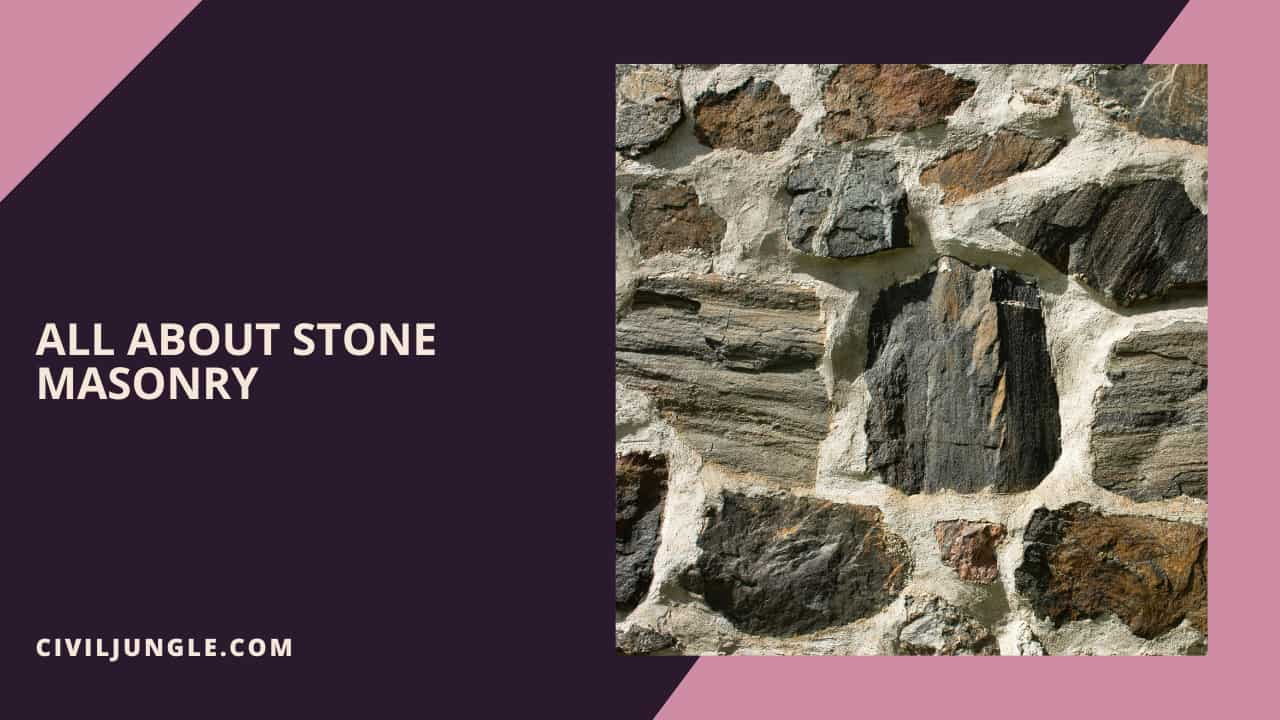

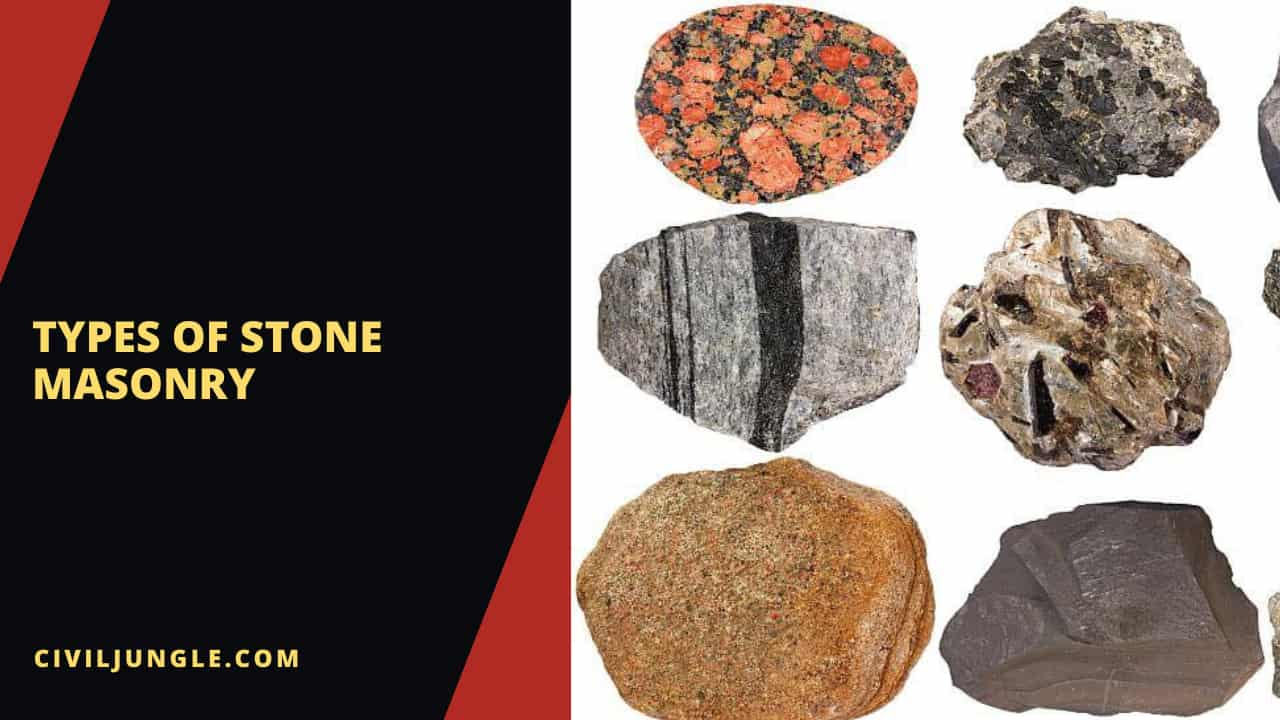
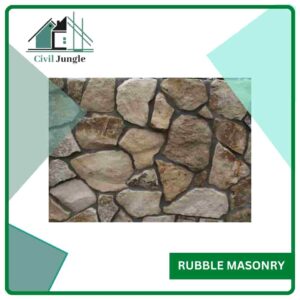
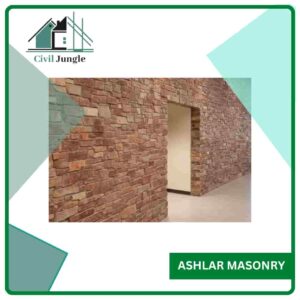
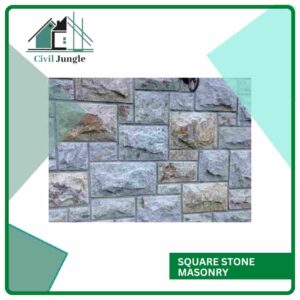

Leave a Reply